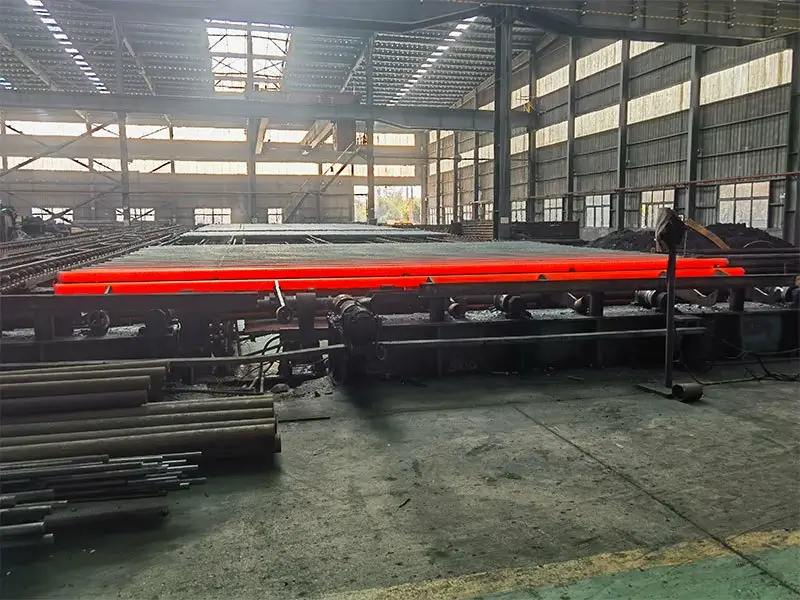The Transformative Effects of Regional Trade Agreements like RCEP on the Steel Supply Chain
The Transformative Effects of Regional Trade Agreements like RCEP on the Steel Supply Chain
May 20,2025

In recent years, regional trade agreements have emerged as pivotal instruments in shaping global economic dynamics, particularly in the context of the steel industry. One of the most significant agreements, the Regional Comprehensive Economic Partnership (RCEP), came into effect on January 1, 2022, and is now playing a crucial role in reshaping the steel supply chain throughout the Asia-Pacific region.
RCEP, which encompasses 15 countries including China, Japan, South Korea, Australia, and the 10 member states of ASEAN, is the world's largest free trade agreement. By eliminating tariffs on a range of products, including steel, and fostering greater economic integration among its member states, RCEP is poised to fundamentally alter how steel is produced, traded, and consumed in the region.
**Enhanced Market Access and Growth Opportunities**
One of the most immediate impacts of RCEP on the steel supply chain is the enhanced market access it provides for member countries. By reducing trade barriers, RCEP allows steel producers in member nations to tap into new markets more effectively. For instance, countries like Vietnam and Indonesia, which have been striving to increase their steel production capacities, can now export their products to larger markets without facing prohibitive tariffs. This not only boosts the local economies but also encourages investment in the steel sector, fostering innovation and technological advancement.
Moreover, the agreement promotes intra-regional trade, allowing countries to source raw materials and intermediate goods more efficiently. For steel manufacturers, this means a more streamlined supply chain, reducing costs and lead times. As countries begin to specialize based on their comparative advantages—such as raw material availability or manufacturing capabilities—RCEP can facilitate the creation of more integrated and resilient supply chains.
**Strengthening Regional Cooperation and Standardization**
With RCEP's implementation, regional cooperation in the steel industry is expected to strengthen significantly. The agreement encourages member countries to harmonize standards and regulations, which can simplify the process of steel production and trade. For manufacturers, this means less bureaucracy and reduced compliance costs. As countries align their standards, it becomes easier for businesses to operate across borders, fostering a more competitive environment.
Furthermore, the partnership emphasizes sustainable development, encouraging member states to adopt environmentally friendly practices in their steel industries. With the steel sector being one of the largest industrial polluters globally, RCEP’s focus on sustainability could lead to innovations in green steel production. This not only aligns with global sustainability goals but also meets the rising demand for environmentally responsible products among consumers and businesses alike.
**Challenges and Adaptations in the Supply Chain**
While RCEP offers numerous opportunities for the steel supply chain, it also presents challenges that stakeholders must navigate. Increased competition among member countries could lead to market volatility, particularly for nations that have relied heavily on protective tariffs to support their local industries. As countries adjust to the new trade landscape, some may face difficulties in maintaining their market share.
Additionally, there is a need for steel producers to adapt to evolving consumer demands and preferences. As the market becomes more interconnected, steel producers must innovate to stay competitive, investing in research and development to create high-value products. This may require collaboration between governments and private enterprises to ensure adequate support for innovation initiatives.
Moreover, geopolitical tensions and supply chain disruptions, exacerbated by the COVID-19 pandemic, underscore the importance of building resilient supply chains. RCEP can play a crucial role in this regard by encouraging diversification of supply sources and fostering stronger relationships among member countries. By working together, nations can better withstand external shocks and maintain a stable supply of steel.
**The Future of the Steel Supply Chain in an RCEP Context**
As RCEP continues to take shape, the steel supply chain in the Asia-Pacific region is expected to evolve significantly. The agreement provides a framework that not only enhances trade and investment but also promotes sustainable development and cooperation among member states. As countries leverage their unique strengths, the result will likely be a more integrated, efficient, and resilient steel supply chain that can respond swiftly to market changes and emerging challenges.
In conclusion, RCEP represents a transformative force in the steel industry, fostering opportunities for growth, innovation, and sustainability. As member countries navigate the complexities of this new trade landscape, the potential for a robust and dynamic steel supply chain is immense. The collaborative spirit inherent in RCEP may very well redefine the future of steel production and trade in the region, making it a focal point of economic development for years to come.
NEXT:



